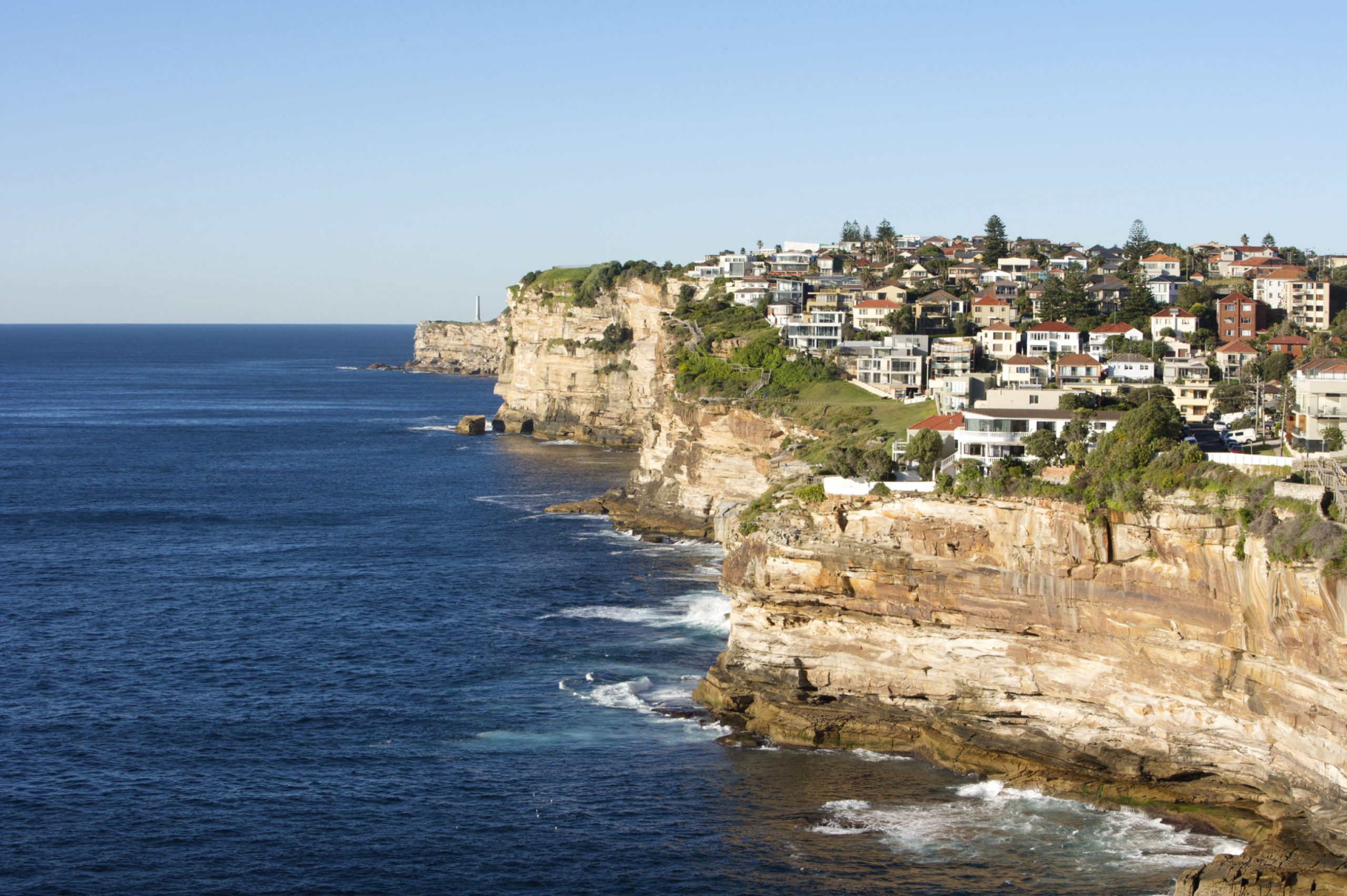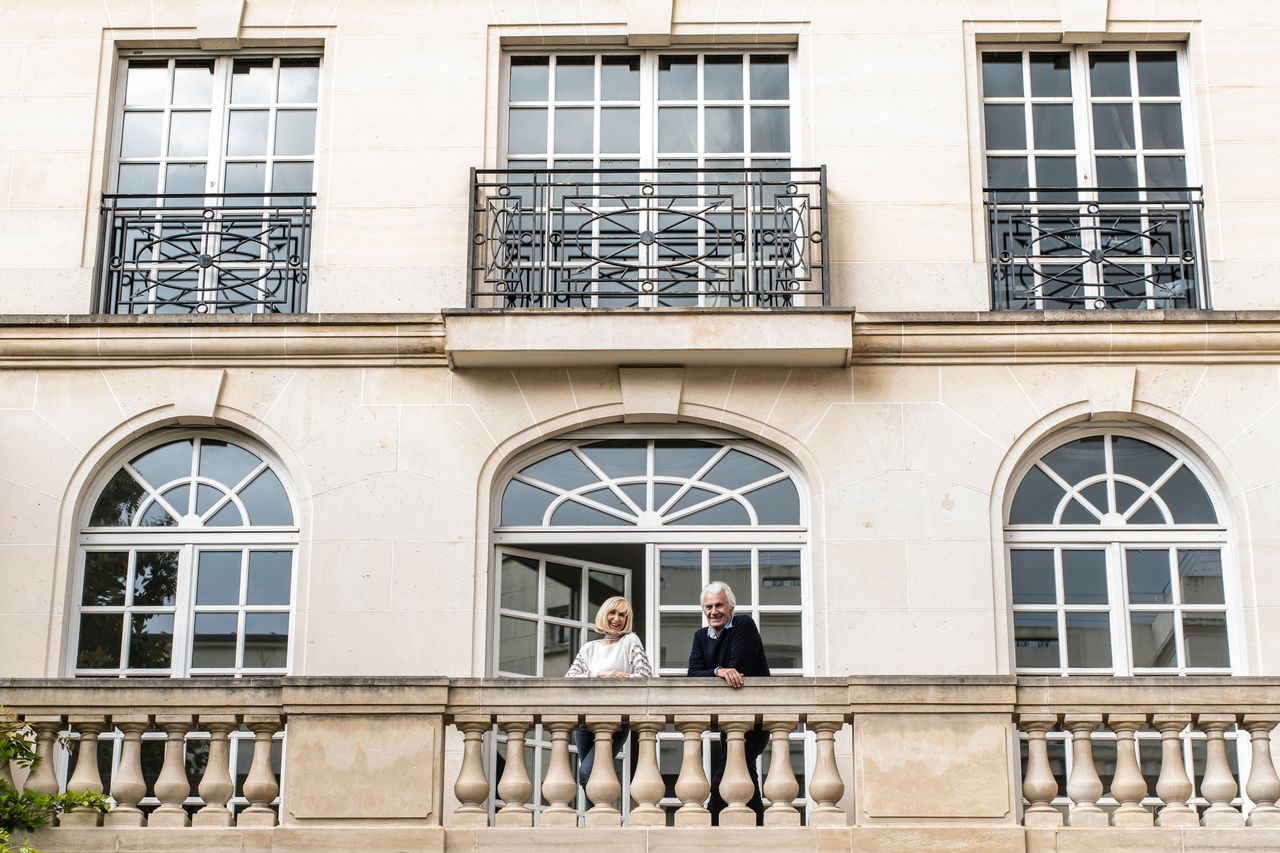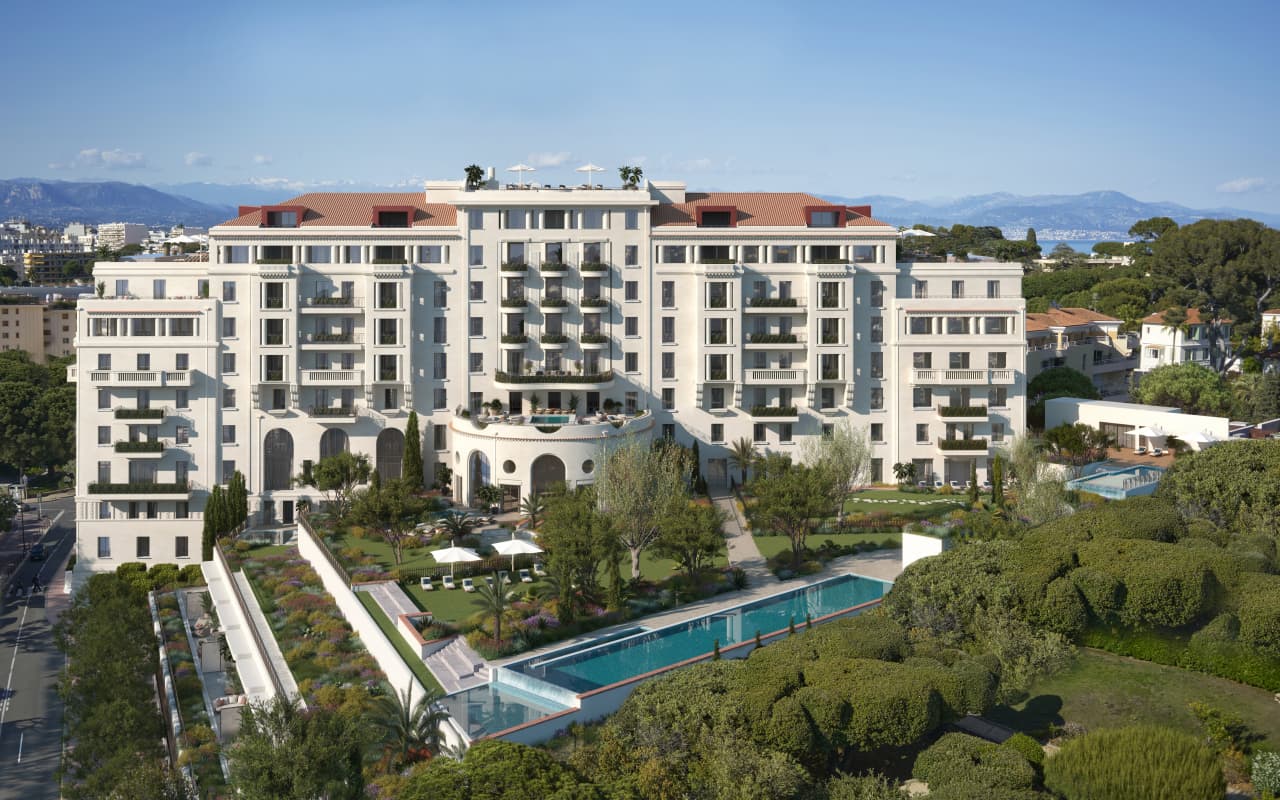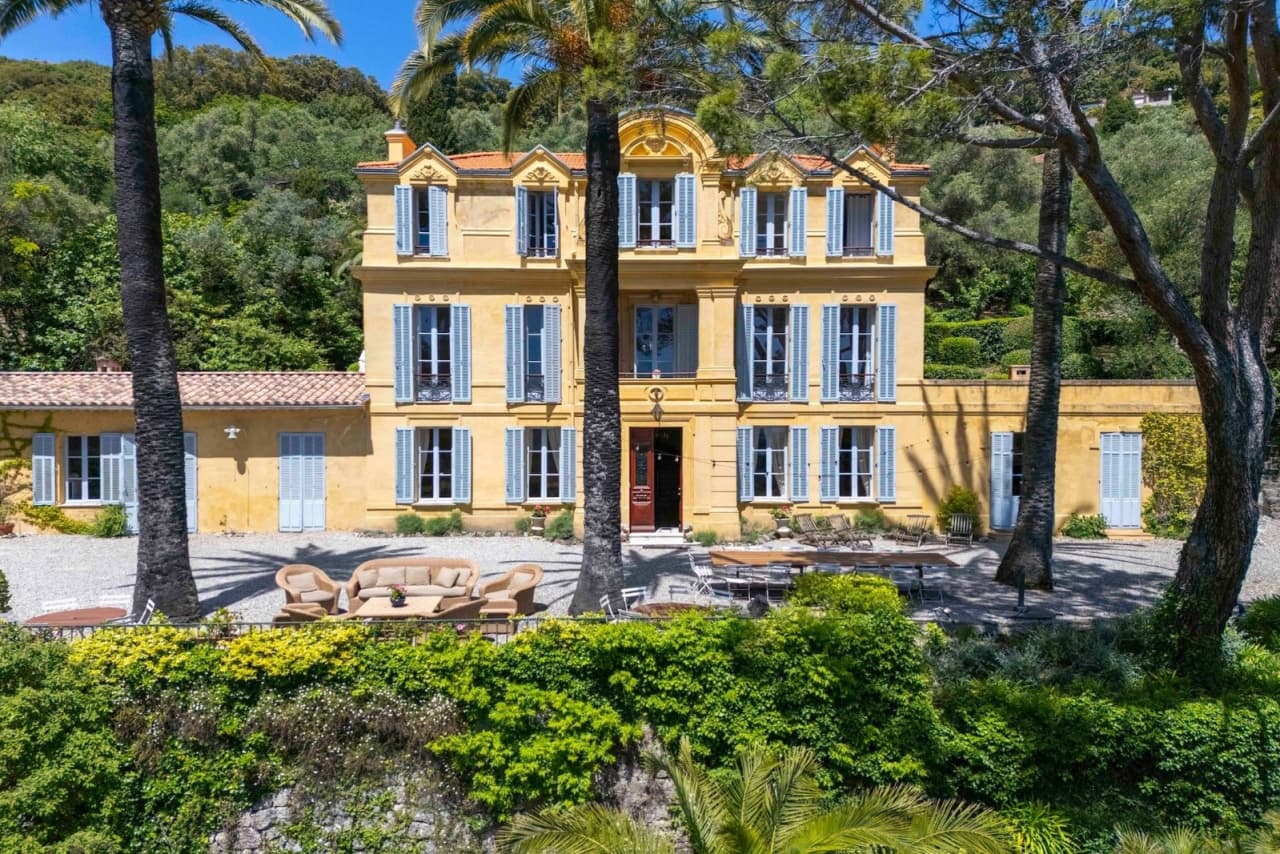Pockets Of Sydney Where You Won’t Overpay
Inner-city areas haven’t shared in the city’s booming price growth.
While prices across greater Sydney soared by nearly 27% to Nov. 1 on average, according to PropTrack, several luxury suburbs have had a fraction of that growth—or even price declines, particularly for apartments.
Cameron Kusher, director of economic research at PropTrack, explained how some highly desirable postcodes have outperformed their neighbours.
“At a suburb level, price growth can sometimes seem to not make sense. Prices in a particular suburb may have boomed over a year, while a neighbouring suburb with similar attributes and properties may have seen very little price growth, or even falls,” Mr. Kushner said.
“We measure median prices based on what sells, so compositional changes in the properties that have transacted can play a role in whether price growth is strong or not so strong,” he added. Such compositional changes could mean smaller or larger homes, more or less acreage or whether prices are skewed by a major outlier transaction.
Slowest Moving House Markets
PropTrack calculated the lowest-growth Sydney suburb for luxury houses (with a median above $2 million) to be in Waverley, a small neighbourhood bordering famous Bondi Beach. It only experienced a 0.19% rise during the year to reach a median of just under $3 million. In Artarmon, about five miles north of the Harbour Bridge, the median luxury-home price increased by just 2.75% to $3.08 million. The exclusive neighborhood of Longueville, a leafy waterfront location also north of the harbour, saw values rise 5.24% to a median of $4.53 million.
While the common thread among suburbs with the strongest house-price growth had been their proximity to water, or exceptional water views, the slower performers were more diverse, Mr. Kushner said.
“The lower-growth areas are a bit more varied; some are waterfront while some aren’t. In the coastal areas, you may find more waterfront homes were sold a year ago, whereas this year it’s properties further away from water (and therefore cheaper) that are selling,” he said.
Apartment Markets With Room to Grow
As with most major global cities, Sydney’s apartment market took a price hit at the height of the pandemic as homeowners, renters and investors stepped away from high-density living.
The PropTrack data highlighting the lowest annual changes in the luxury-apartment market (with a median above $1 million) showed that Northbridge on Sydney’s Lower North Shore experienced a 14.17% price decline to $1.21 million, highly desirable Rose Bay in the exclusive Eastern Suburbs saw a 9% drop in luxury condos to a median of $1.38 million; and the central business district had a 2.78% decrease to A$1.05 million.
“For units, overall price growth in Sydney has lagged behind the growth seen for houses,” Mr. Kusher said, adding that areas with low price growth typically had an abundance of condo inventory.
“Many of them are also inner city, which is likely to be a contributing factor,” he continued. “The suburbs with the strongest growth are typically waterfront and have a lower overall supply of units, which are generally lower density than those found in the inner city. This is likely a major factor driving demand and price growth in these markets.”
Why Some Markets Lagged Behind—Until Now
Reece Coleman, head buyer’s broker at Maker Advisory, said the slower performing Sydney markets had been in a slumber due to the pandemic but looked set to wake up.
“For two years, Australia had some of the toughest border controls in the world,” he said.
“Between 40% to 60% of buyers of our luxury developments around the city, particularly near the harbour, are foreign buyers. Without them buying, prices have been affected,” he said.
That means that even within Sydney’s overheated housing market, there may be a moment of opportunity now for luxury-condo buyers in inner-city areas before international travel picks up again.
Mr. Coleman added that Sydney’s North Shore markets were missing two clear buyer types.
“Traditionally there are a significant number of overseas residents moving here to educate their children at the exclusive schools up in North Shore such as Roseville College, Ravenswood and Knox Grammar. While the borders were closed the families haven’t come,” he said, adding that the North Shore housing market is also fueled by people relocating for work.
“It’s the home of the middle-class executive; the CFOs, CMOs and COOs. But they haven’t been relocating in the last two years either. Expats have been coming back, but we’re not getting those executives transferring from the U.S. or from Europe,” he said.
“So our property market has definitely been affected by our tough border stance.”
Now Australia has reopened borders for some international travel, including citizens and permanent residents, Mr. Coleman said it is only a matter of time before the “sleeper” markets awaken.
“We think January is going to be busy with families returning to Sydney, which will drive up these suburbs. We’re already seeing more inquiries from Hong Kong and Malaysia, from people looking to locate and get their children in local schools,” he said. The relocation for many expat and foreign buyers is carefully timed to fit in with Sydney’s school year which begins in late January.
A Return to Sydney’s Inner City
Adrian Wilson, director of inner Sydney agency Ayre Real Estate, said the inner city was about to go through a renaissance.
“There absolutely was a trend for a while where global cities were far less buoyant than they normally were. But I’m standing in my city office looking out the window and there are people everywhere, which is great,” he said.
“There’s definitely good value for buyers or investors who are willing to consider stock that isn’t necessarily in favour at the moment because of lower rental yields. Buyers with a medium- or long-term view could find some great opportunities around $1 million to $1.5 million in that Central to City South location, because that part of the market hasn’t performed as strongly as others,” Mr Wilson said.
He added that micro markets which experienced “marginally negative” price movement were those with a large investor ownership prior to the pandemic.
“The level of investor interest obviously dissipated during Covid. In some cases city rents fell by as much as 30% immediately after the first wave. But rents are now starting to stabilize, and many of those reductions have crept back up toward where they were before,” he said.
The only way is up for savvy buyers, according to Mr. Coleman, who is now buying several “pied-a-terre” apartments in Sydney for clients that fled the city during the pandemic.
“Sydney’s growth isn’t over. It’s an amazing time to buy in the inner-city areas, they represent amazing value,” Mr. Coleman said. “Sydneysiders migrated out during Covid, but now those areas are coming back to life. We’re literally days away from foreign visitors and international students returning. If the rents go up, then prices will go up.”
Reprinted by permission of Mansion Global. Copyright 2021 Dow Jones & Company. Inc. All Rights Reserved Worldwide. Original date of publication: December 3, 2021.
 Copyright 2020, Dow Jones & Company, Inc. All Rights Reserved Worldwide. LEARN MORE
Copyright 2020, Dow Jones & Company, Inc. All Rights Reserved Worldwide. LEARN MORE
This stylish family home combines a classic palette and finishes with a flexible floorplan
Just 55 minutes from Sydney, make this your creative getaway located in the majestic Hawkesbury region.
Ahead of the Games, a breakdown of the city’s most desirable places to live
PARIS —Paris has long been a byword for luxurious living. The traditional components of the upscale home, from parquet floors to elaborate moldings, have their origins here. Yet settling down in just the right address in this low-rise, high-density city may be the greatest luxury of all.
Tradition reigns supreme in Paris real estate, where certain conditions seem set in stone—the western half of the city, on either side of the Seine, has long been more expensive than the east. But in the fashion world’s capital, parts of the housing market are also subject to shifting fads. In the trendy, hilly northeast, a roving cool factor can send prices in this year’s hip neighborhood rising, while last year’s might seem like a sudden bargain.
This week, with the opening of the Olympic Games and the eyes of the world turned toward Paris, The Wall Street Journal looks at the most expensive and desirable areas in the City of Light.
The Most Expensive Arrondissement: the 6th
Known for historic architecture, elegant apartment houses and bohemian street cred, the 6th Arrondissement is Paris’s answer to Manhattan’s West Village. Like its New York counterpart, the 6th’s starving-artist days are long behind it. But the charm that first wooed notable residents like Gertrude Stein and Jean-Paul Sartre is still largely intact, attracting high-minded tourists and deep-pocketed homeowners who can afford its once-edgy, now serene atmosphere.
Le Breton George V Notaires, a Paris notary with an international clientele, says the 6th consistently holds the title of most expensive arrondissement among Paris’s 20 administrative districts, and 2023 was no exception. Last year, average home prices reached $1,428 a square foot—almost 30% higher than the Paris average of $1,100 a square foot.
According to Meilleurs Agents, the Paris real estate appraisal company, the 6th is also home to three of the city’s five most expensive streets. Rue de Furstemberg, a secluded loop between Boulevard Saint-Germain and the Seine, comes in on top, with average prices of $2,454 a square foot as of March 2024.
For more than two decades, Kyle Branum, a 51-year-old attorney, and Kimberly Branum, a 60-year-old retired CEO, have been regular visitors to Paris, opting for apartment rentals and ultimately an ownership interest in an apartment in the city’s 7th Arrondissement, a sedate Left Bank district known for its discreet atmosphere and plutocratic residents.
“The 7th was the only place we stayed,” says Kimberly, “but we spent most of our time in the 6th.”
In 2022, inspired by the strength of the dollar, the Branums decided to fulfil a longstanding dream of buying in Paris. Working with Paris Property Group, they opted for a 1,465-square-foot, three-bedroom in a building dating to the 17th century on a side street in the 6th Arrondissement. They paid $2.7 million for the unit and then spent just over $1 million on the renovation, working with Franco-American visual artist Monte Laster, who also does interiors.
The couple, who live in Santa Barbara, Calif., plan to spend about three months a year in Paris, hosting children and grandchildren, and cooking after forays to local food markets. Their new kitchen, which includes a French stove from luxury appliance brand Lacanche, is Kimberly’s favourite room, she says.
Another American, investor Ashley Maddox, 49, is also considering relocating.
In 2012, the longtime Paris resident bought a dingy, overstuffed 1,765-square-foot apartment in the 6th and started from scratch. She paid $2.5 million and undertook a gut renovation and building improvements for about $800,000. A centrepiece of the home now is the one-time salon, which was turned into an open-plan kitchen and dining area where Maddox and her three children tend to hang out, American-style. Just outside her door are some of the city’s best-known bakeries and cheesemongers, and she is a short walk from the Jardin du Luxembourg, the Left Bank’s premier green space.
“A lot of the majesty of the city is accessible from here,” she says. “It’s so central, it’s bananas.” Now that two of her children are going away to school, she has listed the four-bedroom apartment with Varenne for $5 million.
The Most Expensive Neighbourhoods: Notre-Dame and Invalides
Garrow Kedigian is moving up in the world of Parisian real estate by heading south of the Seine.
During the pandemic, the Canada-born, New York-based interior designer reassessed his life, he says, and decided “I’m not going to wait any longer to have a pied-à-terre in Paris.”
He originally selected a 1,130-square-foot one-bedroom in the trendy 9th Arrondissement, an up-and-coming Right Bank district just below Montmartre. But he soon realised it was too small for his extended stays, not to mention hosting guests from out of town.
After paying about $1.6 million in 2022 and then investing about $55,000 in new decor, he put the unit up for sale in early 2024 and went house-shopping a second time. He ended up in the Invalides quarter of the 7th Arrondissement in the shadow of one Paris’s signature monuments, the golden-domed Hôtel des Invalides, which dates to the 17th century and is fronted by a grand esplanade.
His new neighbourhood vies for Paris’s most expensive with the Notre-Dame quarter in the 4th Arrondissement, centred on a few islands in the Seine behind its namesake cathedral. According to Le Breton, home prices in the Notre-Dame neighbourhood were $1,818 a square foot in 2023, followed by $1,568 a square foot in Invalides.
After breaking even on his Right Bank one-bedroom, Kedigian paid $2.4 million for his new 1,450-square-foot two-bedroom in a late 19th-century building. It has southern exposures, rounded living-room windows and “gorgeous floors,” he says. Kedigian, who bought the new flat through Junot Fine Properties/Knight Frank, plans to spend up to $435,000 on a renovation that will involve restoring the original 12-foot ceiling height in many of the rooms, as well as rescuing the ceilings’ elaborate stucco detailing. He expects to finish in 2025.
Over in the Notre-Dame neighbourhood, Belles demeures de France/Christie’s recently sold a 2,370-square-foot, four-bedroom home for close to the asking price of about $8.6 million, or about $3,630 a square foot. Listing agent Marie-Hélène Lundgreen says this places the unit near the very top of Paris luxury real estate, where prime homes typically sell between $2,530 and $4,040 a square foot.
The Most Expensive Suburb: Neuilly-sur-Seine
The Boulevard Périphérique, the 22-mile ring road that surrounds Paris and its 20 arrondissements, was once a line in the sand for Parisians, who regarded the French capital’s numerous suburbs as something to drive through on their way to and from vacation. The past few decades have seen waves of gentrification beyond the city’s borders, upgrading humble or industrial districts to the north and east into prime residential areas. And it has turned Neuilly-sur-Seine, just northwest of the city, into a luxury compound of first resort.
In 2023, Neuilly’s average home price of $1,092 a square foot made the leafy, stately community Paris’s most expensive suburb.
Longtime residents, Alain and Michèle Bigio, decided this year is the right time to list their 7,730-square-foot, four-bedroom townhouse on a gated Neuilly street.
The couple, now in their mid 70s, completed the home in 1990, two years after they purchased a small parcel of garden from the owners next door for an undisclosed amount. Having relocated from a white-marble château outside Paris, the couple echoed their previous home by using white- and cream-coloured stone in the new four-story build. The Bigios, who will relocate just back over the border in the 16th Arrondissement, have listed the property with Emile Garcin Propriétés for $14.7 million.
The couple raised two adult children here and undertook upgrades in their empty-nester years—most recently, an indoor pool in the basement and a new elevator.
The cool, pale interiors give way to dark and sardonic images in the former staff’s quarters in the basement where Alain works on his hobby—surreal and satirical paintings, whose risqué content means that his wife prefers they stay downstairs. “I’m not a painter,” he says. “But I paint.”
The Trendiest Arrondissement: the 9th
French interior designer Julie Hamon is theatre royalty. Her grandfather was playwright Jean Anouilh, a giant of 20th-century French literature, and her sister is actress Gwendoline Hamon. The 52-year-old, who divides her time between Paris and the U.K., still remembers when the city’s 9th Arrondissement, where she and her husband bought their 1,885-square-foot duplex in 2017, was a place to have fun rather than put down roots. Now, the 9th is the place to do both.
The 9th, a largely 19th-century district, is Paris at its most urban. But what it lacks in parks and other green spaces, it makes up with nightlife and a bustling street life. Among Paris’s gentrifying districts, which have been transformed since 2000 from near-slums to the brink of luxury, the 9th has emerged as the clear winner. According to Le Breton, average 2023 home prices here were $1,062 a square foot, while its nearest competitors for the cool crown, the 10th and the 11th, have yet to break $1,011 a square foot.
A co-principal in the Bobo Design Studio, Hamon—whose gut renovation includes a dramatic skylight, a home cinema and air conditioning—still seems surprised at how far her arrondissement has come. “The 9th used to be well known for all the theatres, nightclubs and strip clubs,” she says. “But it was never a place where you wanted to live—now it’s the place to be.”
With their youngest child about to go to college, she and her husband, 52-year-old entrepreneur Guillaume Clignet, decided to list their Paris home for $3.45 million and live in London full-time. Propriétés Parisiennes/Sotheby’s is handling the listing, which has just gone into contract after about six months on the market.
The 9th’s music venues were a draw for 44-year-old American musician and piano dealer, Ronen Segev, who divides his time between Miami and a 1,725-square-foot, two-bedroom in the lower reaches of the arrondissement. Aided by Paris Property Group, Segev purchased the apartment at auction during the pandemic, sight unseen, for $1.69 million. He spent $270,000 on a renovation, knocking down a wall to make a larger salon suitable for home concerts.
During the Olympics, Segev is renting out the space for about $22,850 a week to attendees of the Games. Otherwise, he prefers longer-term sublets to visiting musicians for $32,700 a month.
Most Exclusive Address: Avenue Junot
Hidden in the hilly expanses of the 18th Arrondissement lies a legendary street that, for those in the know, is the city’s most exclusive address. Avenue Junot, a bucolic tree-lined lane, is a fairy-tale version of the city, separate from the gritty bustle that surrounds it.
Homes here rarely come up for sale, and, when they do, they tend to be off-market, or sold before they can be listed. Martine Kuperfis—whose Paris-based Junot Group real-estate company is named for the street—says the most expensive units here are penthouses with views over the whole of the city.
In 2021, her agency sold a 3,230-square-foot triplex apartment, with a 1,400-square-foot terrace, for $8.5 million. At about $2,630 a square foot, that is three times the current average price in the whole of the 18th.
Among its current Junot listings is a 1930s 1,220-square-foot townhouse on the avenue’s cobblestone extension, with an asking price of $2.8 million.
This stylish family home combines a classic palette and finishes with a flexible floorplan
Just 55 minutes from Sydney, make this your creative getaway located in the majestic Hawkesbury region.






















